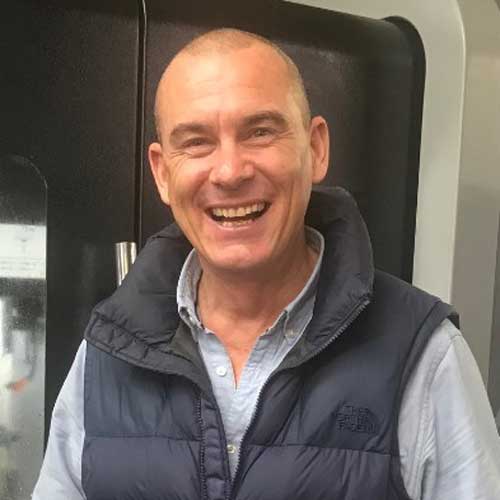A very short pre-flight checklist
- Research the UK market and decide whether you need a platform, a specialist bureau, or an integrated manufacturer.
- Identify providers whose technologies, materials and QA match your brief (SLA/SLS/MJF/FDM/metal).
- Compare lead times, pricing signals and minimum orders before you upload CAD.
1) The UK landscape in 2025 — and how to navigate it
If you’re shopping for 3D printing services in the UK today, you’re really choosing a route, not just a supplier. One route is the global manufacturing platforms with UK reach (e.g., Xometry, Geomiq). They aggregate thousands of vetted partners and surface instant pricing, broad materials, and clear dispatch dates inside their quoting portals, which is helpful when your priority is capacity and speed across many processes.
Another route is the specialist UK bureau. Names like 3DPRINTUK (SLS/MJF) and ARRK (large SLA/SLS capacity) focus on dialled-in process control, predictable finish, and practical production guidance. They publish concrete lead-time ranges—ARRK quotes 1–5 days for SLS, while 3DPRINTUK offers an Express service at 2–4 working days—so you can plan with confidence.
Finally, there are integrated manufacturers (e.g., Protolabs) who can print and help you think beyond printing. If your prototype will evolve into CNC or injection-moulded production, their multi-process capability and DfAM feedback can smooth the path. Protolabs advertises as fast as 1 day on many services and wraps quoting with design analysis.
How to choose the route:
- Pick a platform when you need variety and rapid price discovery across several technologies.
- Pick a specialist if repeatability and process nuance matter more than breadth.
- Pick an integrated manufacturer when you want DfAM input now and a bridge to tooling later.
2) Technologies explained in plain English (and where they shine)
Think of processes as characters with distinct strengths.
SLA/DLP — the model-maker’s brush.
SLA cures liquid resin with light to create crisp, smooth parts ideal for show-and-tell models, fit-and-finish builds, and clear components. Protolabs highlights rapid turnarounds here, underlining SLA when cosmetics and detail are non-negotiable.
SLS — the nylon workhorse.
A laser sinters PA12 or PA11 powder into robust parts without support structures, so you can nest complex geometries. ARRK’s 1–5 day SLS window is typical of UK specialists, and the finish is a fine, matte grain that takes dye and vapor smoothing well.
MJF — production-leaning nylon with tempo.
HP’s MJF fuses nylon powder with agent and heat, producing uniform, isotropic-ish parts efficiently—great for batches. Xometry UK lists 3–5 days for MJF, a realistic benchmark when you’re building a small series on a deadline.
FDM/FFF — the practical prototyper.
Extruded filament is the go-to for quick, budget-friendly jigs and larger components. Platform pages often quote longer standard SLAs (Xometry’s FDM page notes “as fast as 8 days” in the UK), but many niche shops can run truly fast on request.
Metal (DMLS/SLM) — properties first.
When you need stainless, aluminium, titanium or Inconel properties, laser-melted metal powders deliver—at higher cost and with mandatory post-processing. UK platforms show indicative lead times from around 10 days depending on finishing.
Tolerances (the honest version).
Powder-bed nylon parts are consistently good, but they’re not machined parts. Many UK shops and HP’s own guidance point to results around ±0.2–0.3 mm up to ~100 mm, then a percentage thereafter, depending on geometry and finishing. 3DPRINTUK puts this plainly: most parts are within ±0.3 mm or 0.3%. HP’s dimensional white papers explain how build mode, cooling and orientation influence the numbers.
3) Materials that actually move the needle
For most UK buyers, the choice starts with nylon powders:
- PA12 (e.g., EOS PA2200) is the generalist: balanced strength, rigidity and chemical resistance; it’s the most “proven” powder for SLS/MJF and finishes nicely.
- PA11 (Arkema Rilsan®) brings higher ductility and impact resistance, is bio-based, and tolerates abuse where PA12 can crack more brittlely. If your part bends, clips, or must survive repeated flex, PA11 is often the smarter pick.
Beyond nylon, you’ll find glass-filled PA12 for stiffness and heat, TPU for elastomeric lattices and ducts, and specialty resins in SLA for clear, high-temp or medical applications. UK suppliers’ catalogs (EOS, HP materials) make it easy to map properties to parts.
4) Lead times and pricing in the UK — what’s “normal” and what to watch
“Fast” is contextual. A platform may show dispatch dates in the quote itself, while bureaus publish service tiers. Xometry UK, for example, indicates 3–5 days for MJF and longer for some other plastics; its FDM page cites “as fast as 8 days”. Geomiq positions parts “in as little as 3 days” across SLA/SLS/MJF/metal when the geometry and queue allow. Protolabs advertises as fast as 1 day on many additive services. These are dependable heuristics for planning.
On pricing, the quiet line item that breaks many budgets is the minimum order value. Concrete UK examples:
- 3DPRINTUK lists a £40 + VAT minimum, with Express 2–4 working days and clear volumetric pricing tiers.
- 3D People publishes a £30 + VAT minimum (useful for tiny parts—batch them to get value).
How to think about this: if your single camera clip costs £8 by volume but the supplier’s minimum is £40, you’ll pay £40. Combine parts or order five clips and two test coupons; now the unit economics make sense and you get spares for validation.
5) Putting it together — picking the right service by outcome
Imagine three common briefs:
“We need a demo-ready enclosure for next Tuesday.”
You want SLA in a tough or clear resin from an integrated provider or platform queue with fast cosmetic finishing. The surface quality will impress stakeholders, and you can iterate dimensions overnight.“We’re trialling a 50-piece batch of functional brackets.”
Choose MJF PA12 (or PA11 if the part flexes) via a bureau or platform quoting 3–5 days, then specify vapor smoothing and dye where needed. You’ll get production-like nylon with consistent fit across the batch.“This insert must withstand heat and clamping loads.”
Move to DMLS/SLM with post-machining for critical faces. Expect higher unit cost but real metal properties. Use the platform route for quick comparative quotes and finishing choices.
Across all three, keep tolerances realistic (think ±0.2–0.3 mm for powder-bed nylon unless you machine after) and state the finish you need up front (e.g., media-blast + dye, or vapor smooth). HP’s and bureau guidelines explain how post-processing nudges dimensions—worth a line in your RFQ.
6) The Attwood PD way — from idea to production without detours
Plenty of companies will sell you a print. Attwood PD’s job is to help you choose the right process, material, finish and supplier, first time, and to plan the handover to CNC or injection moulding when your design stabilises. We translate your CAD and performance requirements into a sourced plan (e.g., SLS PA12 for early function, MJF PA11 for ductility in pilot runs), align tolerances and inspection so you’re not surprised, and then manage the finishing details that make parts usable, not just printable.
Because we work with UK specialists and global platforms, we can route your job intelligently: the boutique bureau when finish is king; the marketplace when capacity is the risk; the integrated manufacturer when you’ll need DfM and a tooling path. Then, when the design is ready to scale, we move you smoothly into the right conventional process—no relearning, no re-quoting from scratch.
Send us the brief (function, finish, quantity breaks, latest acceptable delivery). We’ll return a process + material recommendation, indicative lead time and pricing model, and a plan for the next two iterations.
7) FAQ, answered in narrative
How fast is “fast” right now?
As a rule of thumb in the UK: SLA parts often ship inside a week, SLS/MJF nylon batches commonly arrive in 2–5 working days, and metal is usually ~10 days plus finishing. For genuinely urgent builds, the 1-day claims from integrated providers are real for suitable parts and queues.
PA11 or PA12?
If you’re unsure, start with PA12 (balanced properties, easy finishing). Switch to PA11 when the part must bend or survive repeated stress; Arkema’s data shows PA11’s superior ductility and damage tolerance.
What tolerances should I write into the PO?
For powder-bed nylon, ask suppliers to meet ±0.2–0.3 mm up to ~100 mm, and a proportional allowance above that; specify any critical faces that will be post-machined. HP’s white papers and bureau pages back up those figures and explain the caveats.
Why did my tiny part cost £40?
You tripped a minimum order. Many UK bureaus publish one (e.g., £30 or £40). Combine parts or increase quantity to improve unit price.


